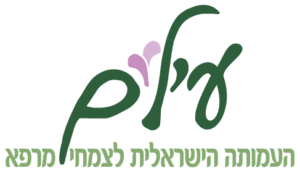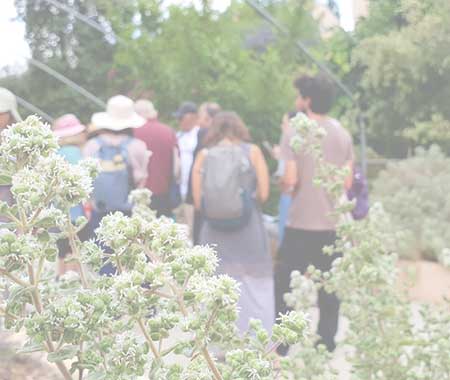Zallouh is the common name in the Middle East for the roots of the plant Ferula hermonis, so named because it grows on the slopes of Mount Hermon in the Golan Heights. The plant grows in a relatively restricted area, and is at risk of over-collection. It is also cultivated in certain countries. It is botanically quite close to Ferula communis, the Giant Fennel. There are several species of Ferula that grow locally and many others throughout the world including the famous species Ferula asafetida. This is a spice, used to flavor foods until today, especially in India. Its name as a spice is asafetida. The Latin name, Ferula, comes from the Latin word for “Walking stick”, because its stem was used as a walking stick. It is mentioned in the Bible (The Book of Job) in that context. Its Hebrew name is “Kelech”.
TRADITIONAL USE
The plant is a locally known medicinal plant which has been used since ancient times as a mild tonic remedy. Current ethnobotanical surveys of the Druze living in the Golan heights, and also the local population of South Lebanon and Syria, all show a strong appreciation of the value of the roots of Zallouh for use as a herb to increase potency and energy, especially in the elderly or in cases of impotence1. Local people have been selling the root informally, often in a homemade product which is mixed with honey, for relatively high prices.
The records of the rich traditional knowledge of Arabic medicine give support to the use of this plant as a sexual tonic. Some sources state that the Arabic name for the plant, “Zallouh”, is a name that in the traditional texts applies to many kinds of roots that are known to increase potency and sexual energy. Therefore the fact that this plant is known locally as “Zallouh” implies that it is known locally as a root that encourages potency. However there are other sources, including some of the great names of Arabic medicine (Ibn AlBetar, AlAntaki) which suggest that the name “Zallouh”, as sexual tonic, only applies to a plant of the description and ecological range of Ferula hermonis. They called it “Oud Alkerach Algabali”.
According to the most famous of all traditional herbalists, Dioscorides, this plant is used for the treatment of tiredness and impotence. He also pointed out that the root can be used to clear the air passages. Galen also mentions this plant. Besides the use of the root, the resin of the cut stem is also used as a medicine for clearing the airways, in coughs chest problems. This is similar to the medicinal use of the asafetida spice, recorded in Indian medicine. Therefore, there is some traditional backing to support this plant as being a relatively unknown and undiscovered treatment for impotence.
SAFETY
It is mentioned traditionally as a mild remedy, not strongly therapeutic for specific disease indications, and traditional sources going back into history state that it is not toxic. Ethnobotanically, it is sometimes used as a flavoring until today by local people. The safety is also supported by the fact that the close relatives are spices. Ferula hermonis is botanically almost indistinguishable from Ferula galbaniflua from which is obtained galbanum – a resin previously used as a mild expectorant (BPC 1934). As mentioned, it is also very close to Ferula asafetida, the roots of which produce the spice asafetida. There is no evidence of adverse effects on grazing animals. This species is not recorded in surveys or reviews of potentially toxic local plants. There is no evidence that this species contains biologically active hormones or other toxic constituents. However, Ferula hermonis is easily confused with other species of Ferula, such as Ferula communis, which has been known to be toxic to grazing animals. So it would be unwise to try to pick this plant from the wild.
A study on cultured fibroblasts at the Antaki Center lab in Haifa Israel, demonstrated that at the pharmacological doses of 0.18 mg/mI of Zallouh extract, there were no signs of cell death or adverse effects on cell structure, as measured by leakage of the enzyme LDH into the surrounding medium.
However, there are now several scientific papers from researchers in Jordan that may show that Ferula hermonis has apparent side effects in rats and mice. These side effects are in the opposite direction to the desired effects – antifertility, reduced sexual activity, ovarian problems and so on. These side effects occur when in the animal experiments, the herbal extracts (especially hydrophobic extracts) are given for a significant dosage for period of time, and are rarely seen in short term dosage.
Therefore on balance, like many herbs, there is good evidence from traditional and ethnobotanical use that the plant is generally safe, but there may be the possibility of side effects, perhaps by using it at the wrong dosage in the wrong way. This is a familiar situation with many herbs. Even Ginseng normally regarded as an extremely safe tonic, can cause side effects such as headaches, insomnia and overstimulation when used in the wrong way, such as by highly energetic young people, especially women.
CHEMISTRY
The plant contains a rich mixture of compounds, in particular sesquiterpenes such as bisabolene It also contains triterpenoid glycosides, compounds which are also present in ginseng, and may contribute to its activity. It contains ferulic acid, like other members of the genus. This compound may be involved in the biological activity of similar plants such as Angelica sinensis (same family), which is used for female tonic effects.
PHARMACOLOGY AND CLINICAL STUDIES
A relatively large number of people have now taken courses of this herbal extract in the Arab sector of Israel. Some of these patients have recorded sperm counts and motility before and after a one or two months course. The majority of patients with low sperm count (5-15 million/mI) reported a significant increase in sperm count during this period, with most also showing improvements in sperm motility, microstructure and white blood cell count. Those who have very low or zero sperm count sometimes reported a modest increase in sperm count, though it never reached normal levels.
There has been some research on the aphrodisiac effects of Ferula hermonis. A study using oil extracted from the seeds demonstrated enhanced erectile function and sexual activity, assessed by penile erection index in rats, at 12 mg/Kg doses. Sub acute toxicity was observed at doses above 50 mg/kg of concentrated oil extract when given over 28 days.
Sexually potent and impotent male rats were orally treated with extracts of Ferula hermonis. The acute administration stimulated motivation in potent rats and improved copulatory performance in sluggish/impotent rats. The results suggests that the plant on acute administration can improve the performance in sexual dysfunctions. However chronic administration of the higher dose reduced testosterone and copulatory performance.
In conclusion, Zallouh is a fascinating medicinal plant with a long history and use in local medicine and Greek-Arabic medicine in general. It has and is still taken as a treatment for impotence by a significant number of people in the region. It joins a relatively large number of herbal remedies that appear to be used in cases of impotence or infertility or poor sexual function. However it should be remembered that plants which improve blood supply, which have effects on the prostaglandin system, which act on hormonal regulation mechanisms, and which improve general health and energy will all tend to improve sexual function, and it is very difficult to single out from all these herbs which are specific for this function. Zallouh may indeed have some interesting properties, but there is a need for good studies to examine the best ways to take it.



